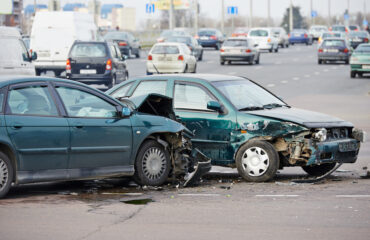November 15, 2015, just another Sunday, right? No, not at all. This coming Sunday is much more is time for road traffic victim remembrance. It is the United Nations (U.N.) World Day of Remembrance for Traffic Crash Victims. Every year, the third Sunday in November is a day to reflect, to think about family, friends, and all those who are killed because of traffic crashes. It is also a day to consider the future and the opportunities of the future, and what we can individually do to save lives. This year’s theme is “It’s time to Remember – Say NO to Road Crime!”

Numbers That Matter
Annually 1.2 million people are killed in traffic crashes, with the vast majority of these deaths preventable. Did you know that traffic crashes are the number one cause of death for teens and young adults around the planet? Did you know that of the 1.2 million, almost half of those fatalities are pedestrians, and motorcyclist? Many times these numbers don’t resonate with us, after all, the numbers are so massive, and what can one person do about a million deaths, or tens of thousands of pedestrians, especially when many of them are in some far off land.
After all, it’s just numbers isn’t it? No, absolutely not. These numbers are people, individuals with mothers and fathers, maybe daughters or sons. Those who are killed have brothers and sisters, family and friends. The sad truth is that today in most everyone’s life we know someone who was killed or seriously injured in a traffic crash. That person is one of the 1.2 million; that person is one of the 50 million serious injuries.
Driving is Risky Behavior
I haven’t had a immediate family member killed in a traffic crash, although my grandparents and aunt were in a very serious crash back in the late 60s. I don’t personally remember anything about the crash, but my parents told me about it. There is no question that it impacted my grandparents and my parents lives. And while I haven’t had a family member killed in a crash, I have had friends killed because of car crashes, people who even knew about traffic safety, but thought that they were safe drivers, so they didn’t have to take the proper safety steps, like wearing a seat belt.

Unfortunately, many people don’t seem to take the risks seriously until there is a direct impact, such as a family member or close friend killed. Is it because driving is a common task and they downplay its risk? Possibly. Many of us drive every day and nothing happens – most of the time. Thus, it must not be as dangerous as declared by traffic safety professionals, or so some people incorrectly believe. After all, it’s always the other person who is a threat on the road, even though the ones who think that thought are doing some of the same dangerous activities, That is one of the most dangerous thoughts we can have while driving, one that says, “I am fine driving and can do all of this dangerous behavior, it is the other person who is a risky driver.” That is wrong. We need to remember that we are all human.
Human Error and Driving
Did you know that between 80 and 90 percent of crashes are because of human error? These crashes are not happening because of bad tires or faulty brakes. They happened because of someone talking on a cell phone, or speeding down the highway, or a motorcyclist not wearing a helmet, or drinking and driving. Sadly, the list of human causes is much longer than these few serious examples.
Road Traffic Victim and Reflecting

What does this all have to do with the U.N. World Day of Remembrance? It has to do with remembering the past and looking towards the future. This coming Sunday is a day to take a moment, an hour, or all day and reflect on the road traffic victim remembrance day, and it is more than that. It is a day to consider our own actions as we drive, it is a time to make changes and maybe even share a message of traffic safety within our families or in our communities. Many countries and communities will have special events this Sunday, remembering lives lost and talking about how you can make a difference.
2011-2020 is the U.N. Decade of Action for Road Safety, where the U.N. has declared a goal of saving 5 million lives on all of our roads. Governments are making important changes in their laws and supporting law enforcement efforts in enforcing those laws. But it will take more than governments, law enforcement officers, and traffic safety professionals, it will take all of us working together to make our roads safer. We have a responsibility to others on the roads to be safe drivers, for ourselves and for the future.

Time to Look to the Future
This Sunday, take some time, reflect on the road traffic victim remembrance day, and remember those in your life who died because of a traffic crash. Reflect on what happened and then look to the future, consider what can be done to make a difference in your life or in the lives of your family. Share the message and save a life. You may never know who’s life you saved, but you will know you have done everything you can, and you may keep those important people in your life safe, continuing to share life’s adventures with you. It’s time to take action, make a change, share the message and become a life saver.
What are you going to do differently to be a life saver? Let me know in the comments below.
Get more articles like this
in your inbox
Subscribe to our mailing list and get the latest information and updates to your email inbox.
Thank you for subscribing.
Something went wrong.






